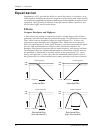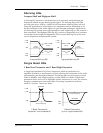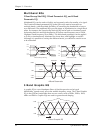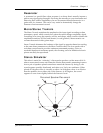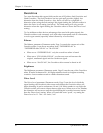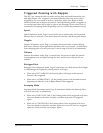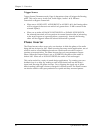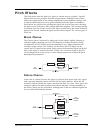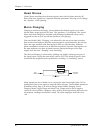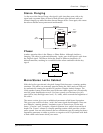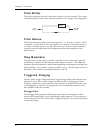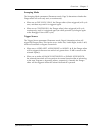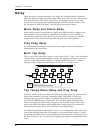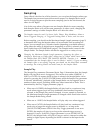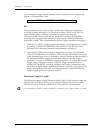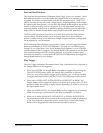
Chapter 3 - Overview
40 Q20 Reference Manual
Quad Chorus
Quad Chorus modulates four delayed signals, each with its phase offset by 90°.
Each of the four signals has a separate Predelay parameter, allowing you to change
the ÒrhythmÓ of the phasing.
Mono Flanging
Flanging is similar to chorusing , but modulates the delayed signal over a much
shorter delay range (typically 0-12ms). This produces a Òjet airplaneÓ-like sound.
Mono and stereo flanging is available, and the flange modulation sweep can be
triggered in order to sync up with the rhythm of your playing.
First used in the 1960s, ÒFlangingÓ was achieved by the use of two tape recorders
that would record and play back the same program in synchronization. By slowing
down one tape machine, and then letting it catch up with the other, different
phase cancellations would occur at different frequencies. Since the slowing down of
the tape machines was done by hand pressure against the flanges of the tape
supply reels, the term ÒFlangingÓ came into being.
The effect of Flanging is achieved by splitting and slightly delaying one part of
the signal, then varying the time delay with an LFO. The delayed signal is then
mixed with the original sound to produce the ÒswishingÓ or ÒtunnelingÓ sound.
LFO
DELAY
DRY
SIGNAL
FLANGED
OUTPUT
FEEDBACK
DRY SIGNAL
Many parameters are available, from varying the speed and depth of the LFO to
feeding back part of the signal to make the effect stronger. The Feedback parameter
(Parameter mode, Page 1) of all four Flanger effects (Mono Flanging, Stereo
Flanging, Mono Trigger Flange and Stereo Trig. Flange) may be set to negative
values as well as positive. Negative values results in the signal being fed back to be
out of phase, creating a more hollow sound. The value range goes from -99 to 0 to
+99.



